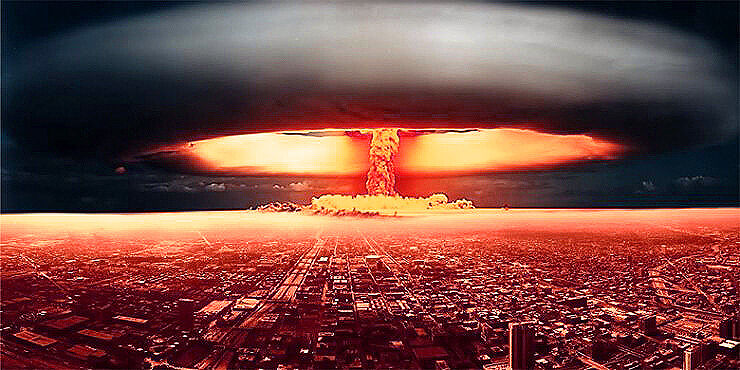

The Uranium Committee has its first meeting on October 21, and $6,000 was budgeted for conducting neutron experiments. Roosevelt receives the Einstein–Szilárd letter and authorizes the creation of the Advisory Committee on Uranium.

He invented the idea of an atomic bomb in 1933 while crossing a London street in Russell Square. 1933 – Leó Szilárd realizes the concept of the nuclear chain reaction, although no such reaction was known at the time.1932 – James Chadwick discovers the neutron, leading to experiments in which elements are bombarded with the new particle.

1924 – Writing for The Pall Mall Gazette, Winston Churchill speculates "Might a bomb no bigger than an orange be found to possess a secret power to destroy a whole block of buildings – nay to concentrate the force of a thousand tons of cordite and blast a township at a stroke?".1920 – Rutherford postulates the existence of a neutral particle in the atomic nucleus at a Bakerian Lecture in London.Inspired by the research of Rutherford, Sir William Ramsay, and Frederick Soddy, the novel predicts the development of atomic weapons, and features a "carolinum"-based hand grenade that does not extinguish once detonated. Wells writes The World Set Free, a science fiction novel postulating a world war in 1956 pitting the United Kingdom and France against Germany and Austria-Hungary. Thomson discovers isotopes through experiments with neon. 1911 – Ernest Rutherford discovers that the majority of the energy in an atom is contained in the nucleus through experiments at the University of Manchester.1905 – Albert Einstein develops the theory of relativity equating energy and matter.1904 – Frederick Soddy first proposes a bomb powered by nuclear fission to the Royal Engineers.1900 – Max Planck theorizes that matter can only absorb energy in fixed quanta.Thomson observes the photoelectric effect. 1896 – Henri Becquerel discovers that uranium emits radiation at the National Museum of Natural History in Paris.1895 – Wilhelm Konrad Röntgen discovers X-rays at the University of Würzburg.The availability of intelligence on recent advancements in nuclear weapons of several major countries (such as United States and the Soviet Union) is limited because of the classification of technical knowledge of nuclear weapons development. In addition to the scientific advancements, this timeline also includes several political events relating to the development of nuclear weapons. This timeline of nuclear weapons development is a chronological catalog of the evolution of nuclear weapons rooting from the development of the science surrounding nuclear fission and nuclear fusion.


 0 kommentar(er)
0 kommentar(er)
